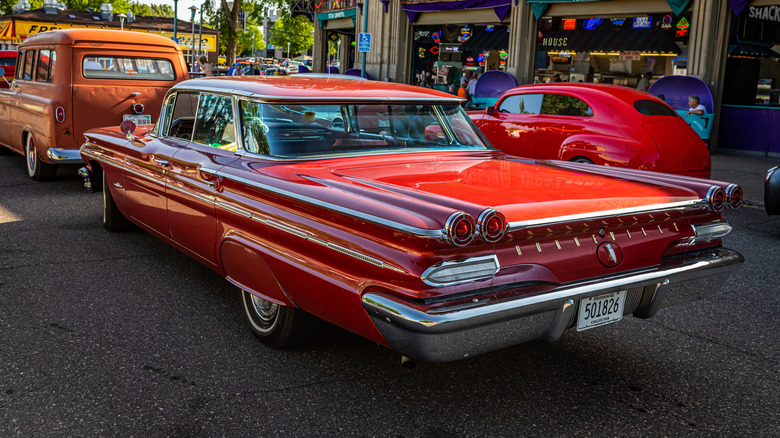
Different_brian/Getty Images
The Pontiac name was first used in 1893 by a horse-drawn buggy company that took its moniker from the Michigan city where it was founded and the Ottawa Native American chief for whom the city was named. Pontiac merged with the Oakland Motor Car company in 1906, and the newly formed General Motors corporation purchased both brands in 1909. The first GM-built Pontiac came in 1926, with a 6-cylinder engine and more rigid body structure than the industry-dominating Ford Model T. Pontiac later produced many of the most powerful and beautiful muscle cars of the 1960s, and eventually became a powerhouse on the NASCAR circuit thanks to drivers like Joe Weatherly, Richard Petty, and Rusty Wallace.
Pontiac’s peak years were from 1963 through 1970, marked by the production of wide-bodied beasts with long hoods and monstrous V8 engines. The brand’s decline started in the mid to late ’70s as new emissions and corporate average fuel economy standards sent American buyers into smaller, more efficient cars.
Pontiac’s later years brought flops like the awful Aztec and flammable Fiero. By 2010, GM was in deep financial trouble, and to meet terms of a government bailout, it axed Pontiac and Saturn and sold Saab. Many of the cars from Pontiac’s heyday make excellent resto-mod projects, thanks to their high production numbers. This means the cars and their parts are affordable and widely available, so here are a handful of the most appropriate Pontiacs for such an endeavor.
1966-70 GTO
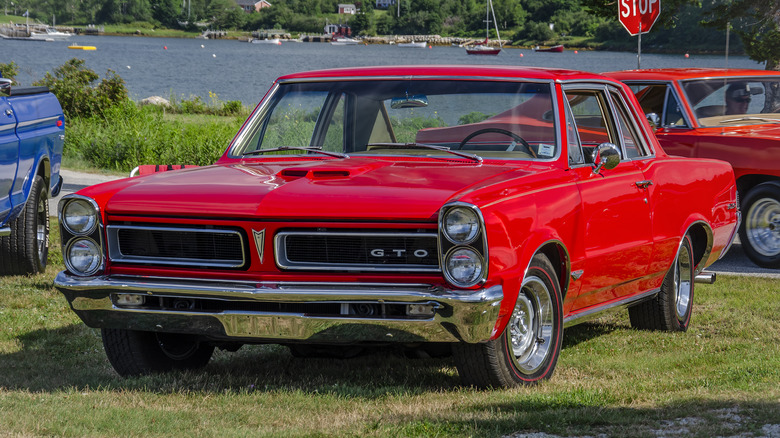
Kenmo/Getty Images
The Pontiac GTO is often credited with dropping the green flag on the muscle car era. It debuted for the 1964 model year as an option package on the LeMans that added a 325 hp, 389-cu-in V8, 4-barrel carburetor, dual exhaust, and a stiffer suspension to handle the added oomph. Buyers could also choose to top the 389 with three 2-barrel Rochester carbs, which increased output to 348 hp. The front end was redesigned to implement stacked headlights in 1965, and according to Hagerty, Pontiac sold more than 75,000 GTOs that year.
The GTO became its own model in 1966, and a 400-cu-in V8 was available beginning in 1967. That was the same year GM stopped putting multiple carbs on anything that wasn’t a Corvette, but an upgraded cam and redesigned heads helped the 4-barrel GTO make 360 hp. Another front end redesign came in 1968, and that year a Motor Trend Car of the Year award win helped pump GTO sales to nearly 90,000 units.
The beefiest GTO engine was the 1970 model’s 455-cu-in V8 that produced a stump-pulling 500 lb-ft of torque to go with its 360 hp. New emissions laws put a huge dent in muscle car sales soon after, and by 1972 the GTO’s sales numbers had dipped below 6,000 units. Late ’60s models are easy to find but not cheap, although aftermarket upgrades like fuel injection systems, exhaust headers, and modern stereos are quite affordable.
1959-70 Catalina
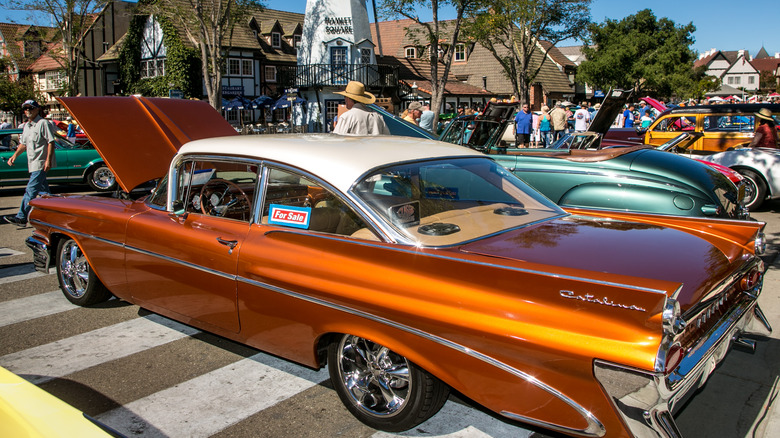
George Rose/Getty Images
While the Catalina isn’t as well-known as some of Pontiac’s other models like the GTO or Firebird, its lifespan from 1950 through 1981 makes it one of the brand’s longest-lived nameplates. Until 1954 it was only a trim level on the Chieftain and Star Chief, and was then offered on the Super Chief through 1958. The next year, the Chieftain and Super Chief were rebadged as the Catalina, while the Star Chief carried on through 1966. Until 1970, the Catalina shared options and components with Pontiac’s other full-sized models like the Star Chief, Executive, and Bonneville. Among those common elements were V8 engines that ranged in size from 389- to 455-cu-in and put out as much as 410 hp and 480 lb-ft of torque. Those eye-popping peak numbers were achieved by the 1963 Catalina with the 421-cu-in engine topped by a pair of 4-barrel carburetors.
1971 and later models were hobbled by emissions restrictions and lost some of the classic styling of the earlier versions, but it’s not hard to find one of the more stylish and powerful ’60s models for less than $15,000.
Because the Catalina shared its engines with so many other models — including the GTO — there is a large supply of replacement parts and aftermarket upgrades to help you with your resto-mod project, whether you want to keep it close to original or update it with modern features like LED lighting or a Bluetooth sound sytem.
1954-66 Star Chief
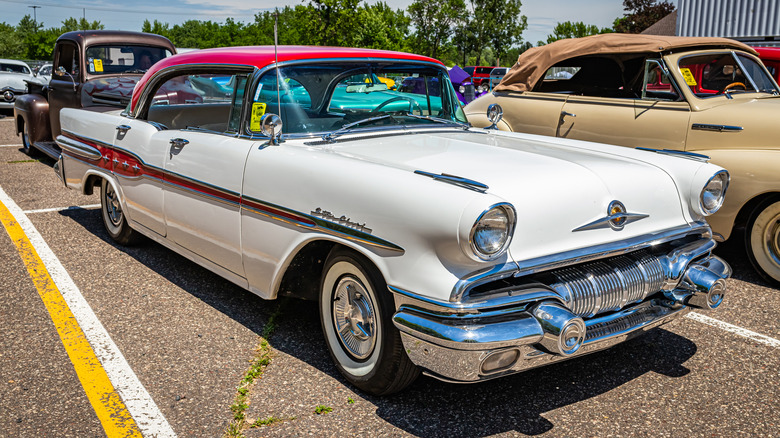
Different_brian/Getty Images
The Star Chief appeared in 1954 as a longer version of the Chieftain. Eleven inches were added to the Chieftain’s frame, giving the Star Chief a 124-in wheelbase. That’s more than an inch longer than that of the 2024 standard bed Ford F-150 pickup. The Star Chief got a redesign in 1955, as well as a new V8 engine and a convertible body style option. A 1955 Star Chief was featured in Episode 110 of «I Love Lucy,» carrying Lucy and Ricky Ricardo (Lucille Ball and Desi Arnaz) to their new home in California, stacked with luggage and cradling Fred and Ethel Mertz (William Frawley and Vivian Vance) in its sizable back seat.
Further updates to the Star Chief came in 1958, 1959, 1961, and 1965, by which time the name had become a bit dated. That prompted Pontiac to rechristen the model as the Executive in the United States and the Laurentian in Canada for the 1967 model year. During its run, the Star Chief came with a choice of eight cylinder engines ranging up to 370-cu-in and in convertible, sedan, coupe, and wagon body styles. You’ll probably want to leave the stunning exterior as close to original as you can, but, just as with Pontiac’s other V8-powered cars, you can find an array of fuel injection, exhaust, and alternator upgrades for the Star Chief.
1961-63 Tempest/LeMans
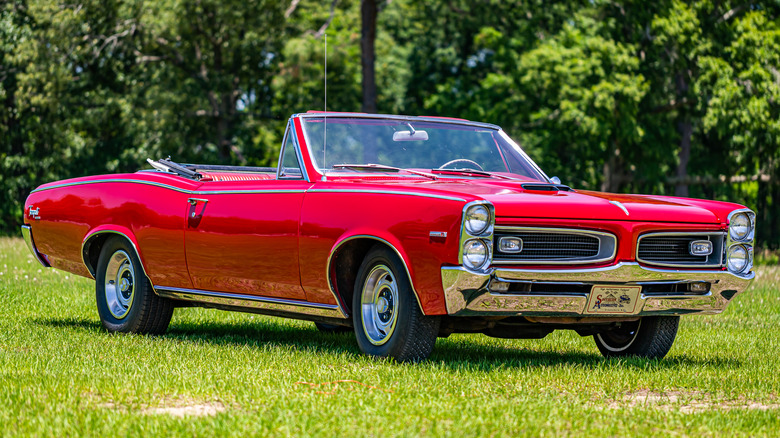
Different_brian/Getty Images
Pontiac made a habit of warping one model into another, and the GTO is linked to the Tempest through the LeMans. Bear with us a minute while we trace this line, which swoops through the three models like the deckline that runs from the original Tempest’s taillights to its headlights. The Tempest first appeared for the 1961 model year, sharing its Y-body design with the Buick Special and Skylark and the Oldsmobile F-85 and Cutlass. While its Buick and Olds cousins had typical front engine and front transmission layouts, the Tempest used a flexible driveshaft to mate the front-mounted engine with a rear transaxle.
This design was the brainchild of Pontiac chief engineer John DeLorean, who would later go on to establish his own company. The 1961 Tempest won the Motor Trend Car of the Year award, and the Crittenden Automotive Library quotes Road and Track as calling it «one of the very best utility cars since the Ford Model A.» It was powered by a 195-cu-in 4-cylinder engine, which was essentially half of Pontiac’s 389 cubic inch V8.
The LeMans began as the top trim level on the Tempest but was split off into its own model in 1963. The following year, the Tempest disappeared and the GTO was offered as an option package on the LeMans. The Tempest and LeMans got beefy V8 engines in 1963, and aftermarket and replacement support is robust for both models.
1957-70 Bonneville
Pontiac first used the Bonneville name on a 1954 2-seat show car with a fiberglas body and plexiglas canopy. The Bonneville Special had gullwing sections atop the doors and an overall appearance that placed it somewhere between a Formula 1 car and the Batmobile. By the time the Bonneville became a limited production model in 1957, it had become a more traditional convertible, although it was equipped with the most advanced technology of the era: Pontiac’s «Strato-Flight» automatic transmission, power brakes and steering, a signal-seeking «Wonderbar» radio with a power antenna, and power seats and windows. Convertibles also had an electric top, and Bonneville interiors were given leather seats and plush carpeting.
Under the hood was a new 370 cubic inch V8 with Rochester fuel injection. This configuration delivered 310 hp, 400 lb-ft of torque, and 20.4 miles per gallon.
The Bonneville went from limited edition to full production model in 1958, and Pontiac added a hardtop coupe to the lineup. A 1959 redesign made the model wider, longer, and lower, and another big update came in 1961. A fourth generation ran from 1965-1970, but after that the model was surpassed by the Grand Ville and fell victim to the oil crisis. Third and fourth generation Bonnevilles are generally most affordable on the used marketplace, and upgrades and replacement parts are easy to find.
[Featured image by artistmac via Wikimedia Commons|Cropped and scaled|CC-By 2.0]